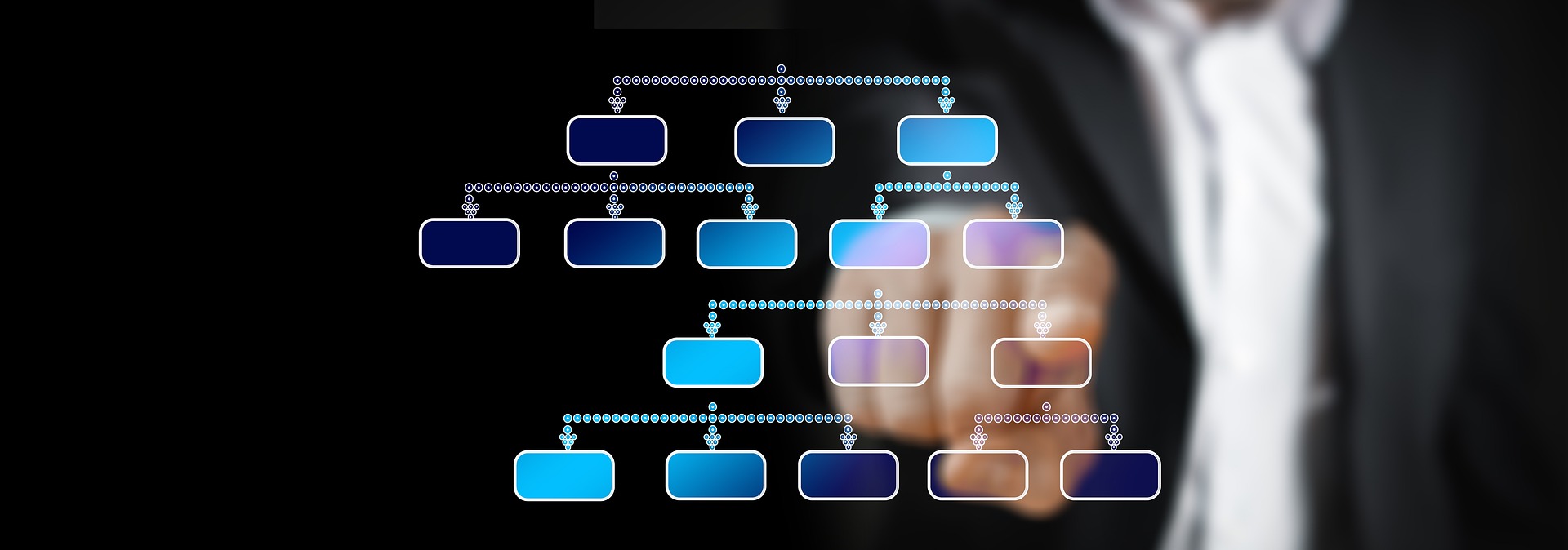
Decentralized Autonomous Organizations as a Novel Legal Entity: Reconciling Technological Innovation with Classical Legal Constructs
Decentralised Autonomous Organisations (DAOs) are fundamentally different from existing organisational and legal forms, not only in terms of technology, but also – more importantly from a legal perspective – in terms of structure and function. What is particularly intriguing is that DAOs, as a technological and social phenomenon, first emerged in a non-legal reality, somewhat ahead of the systemic reflection of the legislator. It is important to emphasise a key ontological feature of DAOs: in their original form, these organisations have no legal personality whatsoever and do not require any registration or formal incorporation.
Introductory Observations: On the Rarity of New Legal Persons
The history of private law – in both its civil and common law dimensions – furnishes remarkably few instances of genuinely transformative organizational-legal constructs. Confining our analysis to the past four centuries, the catalog of such innovations proves surprisingly sparse. The joint-stock company, which flourished in the seventeenth century (exemplified by the Dutch Vereenigde Oostindische Compagnie of 1602), the limited liability company that took shape in the nineteenth century (represented by England’s Limited Liability Act of 1855 and Germany’s Gesellschaft mit beschränkter Haftung of 1892), and finally the organizational forms of civil society – foundations as entities pursuing statutory purposes through dedicated patrimony (check out – how to set up family foundation in Poland), and associations as voluntary aggregations pursuing shared non-commercial objectives, whose modern codification occurred during the nineteenth and twentieth centuries – these constitute virtually the exhaustive inventory of fundamental breakthroughs in the law of legal persons during the modern era.
One must emphasize a crucial ontological feature of DAOs: in their original form, these organizations possess no legal personality whatsoever and require neither registration nor formal incorporation. A DAO exists as a constellation of smart contracts operating on a blockchain, as a community of governance token holders, as a technological protocol – but not as a legal subject in the traditional sense. Only secondarily – confronted with mounting practical difficulties related to functioning in legal commerce, entering contracts, acquiring intellectual property, or conducting regulated activities – did two parallel adaptive processes emerge.
The first comprises efforts by blockchain ecosystem participants to situate DAO structures within existing legal forms through the construction of so-called legal wrappers – legal shells utilizing familiar institutions: the limited liability company, Swiss or Cayman foundations, unincorporated associations. The second process consists of legislative initiatives undertaken by jurisdictions seeking to create dedicated legal frameworks for DAOs, exemplified by Wyoming’s pioneering Decentralized Autonomous Organization Supplement of 2021 and the Marshall Islands regulations.
Concurrently, however – and here we touch upon the third and most contentious dimension of the problem – American courts have confronted cases compelling the judiciary to pronounce upon the legal status of unwrapped DAOs functioning in commerce, often commanding tens or hundreds of millions of dollars in digital assets yet lacking any formal legal structure. The jurisprudence that developed during 2022-2024 adopted a direction both surprising and not necessarily consonant with pioneering legislators’ intentions – courts began consistently classifying DAOs as general partnerships under state law, with all attendant consequences, including unlimited joint and several liability of members.
This Article undertakes a multifaceted analysis of this phenomenon: first, reconstructing the legal and technological essence of DAOs; second, examining pioneering legislative solutions; third, analyzing groundbreaking American jurisprudence and its implications for DAO participants; and fourth, addressing the complex tax and regulatory landscape, which remains in a state of intensive formation and generates substantial legal risks for all ecosystem participants.
As a practitioner specializing in international tax law and corporate structures over the past two decades, I observe a process that transcends ordinary doctrinal evolution. We witness an attempt by the legal order to assimilate an entity that arose outside that order and whose technological nature poses fundamental questions about the adaptive limits of traditional legal categories. Can the law of partnerships and corporations, shaped for the physical world, encompass a digital, decentralized, and largely anonymous phenomenon? Does the alternative – creating dedicated regulatory frameworks – constitute excessive intervention in technology whose strength lies precisely in eluding traditional control structures? These questions define the horizon of the analysis that follows.
The Essence of DAOs: Toward Legal and Functional Definition
A Decentralized Autonomous Organization must be understood – in the first instance – as a technological construct: an organization managed wholly or predominantly by decentralized computer programs, with voting and finances handled through distributed ledger technology, in practice blockchain. Functionally, a DAO constitutes a member-owned community lacking centralized leadership, in which decisions are made through voting with tokens representing membership rights, and decision execution occurs automatically through smart contracts.
The technological foundation of DAOs is blockchain – a distributed, public transaction ledger in which records are cryptographically secured and remain immune to unilateral modification. Smart contracts, in turn, are automated scripts executed upon satisfaction of specified conditions, enabling implementation of organizational governance rules in a manner theoretically independent of trust in any central institution or natural person. As Vitalik Buterin, Ethereum’s co-creator, astutely observed, once launched, a DAO could function without managerial human intervention, provided smart contracts are supported by a Turing-complete platform such as Ethereum.
Although the term “decentralized autonomous organization” emerged in the 1990s, it gained widespread adoption only after 2013, particularly following the 2016 launch of “The DAO” – the first major organization of this type on the Ethereum blockchain, which amassed 3.6 million ether (then exceeding $70 million) but fell victim to a hack resulting in the loss of $50 million. This incident not only highlighted risks associated with the impossibility of easily repairing code errors post-deployment but also catalyzed intensive debate regarding the necessity of creating legal frameworks for such structures.
DAO governance is coordinated through tokens or NFTs conferring voting rights, with greater token holdings typically translating to enhanced voting power. Governance proceeds through a series of proposals on which members vote via blockchain. Paradoxically, however, voting-rights tokens are frequently not utilized for voting – inactive token holders constitute a serious obstacle to effective governance, prompting implementation of vote delegation mechanisms. Moreover, research on decentralized finance has demonstrated that token distribution is characterized by high concentration among a small cohort of holders, leading to power concentration that undermines ambitious decentralization objectives. This timocratic character of DAO governance – where power derives from wealth measured in token holdings – represents one of the fundamental tensions between decentralization ideology and these structures’ operational reality.
Pioneering Legislative Frameworks: Between Innovation Recognition and Legal Certainty Requirements
On July 1, 2021, Wyoming became the world’s first jurisdiction to introduce comprehensive legislation dedicated to DAO structures – the Wyoming Decentralized Autonomous Organization Supplement. This statute defines a DAO as a limited liability company whose articles of organization contain a statement adopting decentralized autonomous organization status and specify how the organization will be managed by members, including the scope of algorithmic management. American CryptoFed DAO became the first business entity recognized under this legal regime.
Analysis of the Wyoming DAO Act reveals fundamental tension between enabling technological innovation and ensuring minimal standards of accountability and transparency. On one hand, the statute requires organizational name designation through addition of “DAO,” “LAO,” or “DAO LLC” and publication of smart contract identifiers used for management – solutions implementing technological transparency principles vis-à-vis counterparties. On the other hand, the provision addressing fiduciary duties represents radical departure from traditional corporate construction: unless the articles of organization or operating agreement provide otherwise, DAO members owe neither the organization nor other members any fiduciary duties, save the default obligation of good faith and fair dealing.
This solution reflects the philosophical premise underlying DAO construction: eliminating trust in persons in favor of trust in code (code is law). However, as critics astutely observe, complete abolition of fiduciary duties – both duty of care and duty of loyalty – deprives minority members of fundamental protection against abuses by majority members or managers. Wyoming’s statute assumes that technological transparency can replace traditional corporate governance mechanisms, permitting members to limit information rights when data is available on an open blockchain. This assumption remains problematic given technical barriers to blockchain data interpretation for average participants and the fact that many significant decisions and circumstances may not be recorded on-chain.
In 2024, Wyoming supplemented its legislation with the Decentralized Unincorporated Nonprofit Association Act, offering an alternative structure for nonprofit DAO projects. DUNAs require a minimum of one hundred members, pursuit exclusively of nonprofit purposes, and prohibition of residual profit distribution to members. This model was constructed with blockchain protocols and open-source projects in mind, serving public goods functions – public infrastructure that seeks not to generate member profits but to develop the ecosystem as a whole.
Concurrently, solutions developed in other jurisdictions. The Marshall Islands introduced legislation characterized by even greater flexibility and minimal compliance requirements, rendering this jurisdiction attractive for globally-oriented projects. The Cayman Islands, traditionally dominant as a jurisdiction for investment funds, offer the foundation company model – an “ownerless” entity whose assets are managed toward specified statutory purposes. This construction has gained particular popularity among larger DeFi projects due to complete tax neutrality and well-developed common law legal infrastructure. Switzerland employs the foundation institution, subject to state supervision and enjoying recognition among projects seeking institutional credibility, with foundation directors owing fiduciary duties to foundation purposes rather than to founders or beneficiaries.
These diverse legislative solutions share a common denominator: an attempt to create legal frameworks enabling decentralized structure operation while simultaneously ensuring members’ limited liability and minimal legal predictability. Nevertheless, parallel to these legislative efforts, judicial doctrine developed in a diametrically opposite direction.
Groundbreaking Jurisprudence: The General Partnership Theory as Judicial Response
The most dramatic turn in shaping DAOs’ legal status proved to be decisions by American courts during 2022-2024 which – contrary to Wyoming legislators’ intentions – classified unwrapped DAOs as general partnerships under state law. This series commenced with the precedential resolution in CFTC v. Ooki DAO, wherein federal Judge William H. Orrick ruled in December 2022 that Ooki DAO constitutes a “person” within the meaning of the Commodity Exchange Act and may be held liable for violations thereof. This judgment resulted in imposition of monetary penalties and issuance of a permanent injunction, with the court classifying the DAO as an unincorporated association, which under American law implies potential joint and several liability of all members.
Considerably more profound analysis of DAOs’ legal qualification occurred in Sarcuni v. bZx DAO, decided by the Southern District of California in March 2023. This case, which might be characterized as one of first impression, concerned liability of bZx DAO members for losses sustained by DeFi protocol users following a phishing attack that precipitated theft of $55 million in cryptocurrency. Plaintiffs argued that all BZRX token holders constitute a general partnership and bear joint and several liability for organizational negligence.
The court conducted meticulous analysis grounded in California partnership law, which provides that an association of two or more persons carrying on as co-owners a business for profit forms a partnership, regardless of whether such persons intend to form a partnership. The crucial element of this definition is the provision that a partnership may arise independently of parties’ intent if their actions and conduct demonstrate an intention to engage in business together. The court applied a three-element test, examining whether the DAO constitutes an association of persons, whether it conducts business for profit, and – most significantly – whether token holders act as co-owners.
Regarding this final element, the court thoroughly analyzed BZRX token holders’ governance rights, determining they could propose organizational changes, vote on proposals concerning treasury expenditures, employ persons on the DAO’s behalf, modify organizational objectives, and distribute assets to members analogously to corporate dividends. Defendants argued that tokens confer only limited management rights concerning a narrow parameter set, insufficient to establish partnership existence. The court rejected this argument, citing precedent establishing that the fact no partner possesses complete control over any enterprise portion does not negate partnership existence.
Concerning profit sharing – the second crucial co-ownership indicator – the court deemed sufficient the indication of token holders’ ability to vote on treasury asset distribution and relied upon the CFTC’s Order Instituting Proceedings, which confirmed that liquidity providers received interest-generating tokens. According to long-established California law principles, an agreement to share profits implies an agreement for corresponding loss sharing unless expressly stipulated otherwise.
Particularly significant is the court’s response to defendants’ argument that recognizing each token holder as an enterprise co-owner with unlimited personal liability would constitute radical partnership law expansion. The court cited a DAO founder’s statement in public remarks explicitly declaring that transition to DAO structure was designed to ensure that when regulators demand compliance, the organization could do nothing because “we’ve given it all to the community.” In this context, the court concluded that recognizing the DAO as a general partnership constitutes not radical expansion but proper application of long-established principles, invoking precedent that courts do not sanction partnerships attempting to secure all commercial intercourse benefits without corresponding liabilities.
This doctrine was further consolidated in Samuels v. Lido DAO in 2024, wherein the Northern District of California rejected arguments that Lido DAO constitutes “merely autonomous software.” The court emphasized that Lido’s alleged actions – making decisions through votes, maintaining a treasury, employing over seventy staff – are actions of an entity managed by people, not an autonomous program. This decision carried particularly far-reaching consequences, exposing major institutional investors – including Andreessen Horowitz, Paradigm Operations, and Dragonfly Digital Management – to potential partnership liability for securities law violations.
These decisions create a coherent jurisprudential line that fundamentally challenges the possibility of unwrapped DAOs functioning outside traditional corporate law categories. Courts consistently reject the argument that technological decentralization can substitute for formal legal structure, instead applying analogy to the most elementary yet most rigorous form of business organization – the general partnership with unlimited joint and several member liability. This jurisprudential approach creates fundamental conflict with intentions of pioneering legislators such as Wyoming, who sought to enable decentralized structure operation while simultaneously ensuring limited liability.
Tax Implications: Between Uncertainty and Compliance Risk
The tax treatment of DAO structures remains an area of profound legal uncertainty, generating substantial risks for all ecosystem participants. The Internal Revenue Service has issued no detailed guidance on DAO taxation; consequently, tax qualification depends on entity classification under existing check-the-box regulatory frameworks. In this situation, most practitioners and legal doctrine conclude that unwrapped DAOs will be treated by the IRS as partnerships under default classification, implicating tax transparency – income flow-through to members proportionate to their interests.
The practical compliance challenges of this model are serious and in many cases exceed decentralized structures’ factual capabilities. A DAO operating as a partnership must file partnership tax returns and issue individual schedules to each member reporting proportionate income and loss shares. This problem intensifies dramatically for DAOs with hundreds or thousands of token holders, particularly when tokens are freely tradable on exchanges, members remain anonymous or pseudonymous, and ownership distribution changes constantly. Determining each member’s capital account and profit share is often factually impossible, calling into question the ability to satisfy partnership taxation’s formal requirements.
The situation grows more complex for American taxpayers participating in DAOs deemed foreign entities, who face reporting burdens encompassing forms for foreign corporations and partnerships, plus potential controlled foreign corporation income inclusion under Subpart F provisions.Controlled foreign corporation rules prove especially problematic: if American taxpayers collectively hold more than fifty percent of voting rights or value in a foreign corporation, each qualifying shareholder must include in income a proportionate share of specified income categories – regardless of whether actual distribution occurred. For DAOs with dispersed ownership structures, determining whether the control threshold has been exceeded and identifying qualifying shareholders may be infeasible.
Further complications arise from publicly traded partnership rules: widely distributed DAO governance tokens typically qualify as readily tradable, potentially forcing corporate classification if the DAO generates more than ten percent active income. Such classification’s consequence is double taxation – the DAO itself becomes subject to corporate income tax, and distributions to token holders face additional taxation as dividends, placing DAOs generating significant protocol revenues in particularly disadvantageous tax positions.
Structures employing legal wrappers offer greater tax certainty, though they do not eliminate all problems. Wyoming DAO LLCs provide default tax transparency with members’ limited liability but remain entities subject to complex reporting requirements for foreign members. Wyoming DUNAs face entity-level taxation and may potentially qualify for tax-exempt organization status, though this possibility remains untested in practice. Offshore jurisdictions (read more about offshore companies) such as the Marshall Islands or Cayman Islands offer tax neutrality at the incorporation site; however, for American members they remain foreign entities potentially subject to controlled foreign corporation rules and Foreign Account Tax Compliance Act reporting requirements (check out foreign bank account).
Irrespective of the DAO’s classification, individual participants confront numerous taxable events: receiving governance tokens as compensation triggers ordinary income recognition at fair market value; token sales generate capital gain or loss depending on holding period; DAO distributions constitute taxable income. In tax-transparent structures, members are taxed on their allocated share regardless of actual distributions, which for illiquid tokens may create negative cash flow situations – tax payment obligations without corresponding cash.
This problematic illustrates fundamental tension between decentralized structures’ nature and traditional tax systems’ requirements. The latter presume identifiable taxpayers, determinate tax residency, ability to ascertain income and its allocation among members, and effective enforcement mechanisms. DAO structures – particularly those operating entirely on-chain with anonymous members and automated distribution mechanisms – elude these presumptions, creating scenarios where income may effectively escape taxation not through intentional tax optimization but through inability to apply existing legal categories.
Conclusion: Toward Hybrid Architectural Solutions
Analysis of the three dimensions of DAO problematic – legislative, jurisprudential, and fiscal – reveals profound tensions between decentralization ideology and legal order requirements. On one hand, pioneering legislation such as Wyoming’s DAO Act seeks to accommodate decentralized structures through dedicated legal frameworks offering limited liability with minimal compliance requirements. On the other hand, judicial doctrine consistently rejects the possibility of unwrapped DAOs functioning outside traditional corporate law categories, applying analogy to the partnership with its most rigorous consequences. Finally, tax treatment remains in a state of profound uncertainty, generating compliance risks often exceeding decentralized structures’ factual capabilities.
Confronting these tensions, consensus emerges among practitioners and legal doctrine: sophisticated DAOs should adopt layered legal architecture combining legal wrappers with on-chain governance. The base layer in the form of a DAO-dedicated entity (Wyoming DAO LLC, Marshall Islands DAO LLC, Cayman foundation company, Swiss foundation) provides token holders’ limited liability, legal personality for contracting, recognition as a distinct entity, and certainty regarding applicable law. The operational layer in the form of additional legal entities enables risk segregation, cross-jurisdictional tax optimization (check out Tax Planning – Comprehensive Legal and Tax Advisory), compliance with sectoral regulatory requirements, and flexible structuring for specific projects.
This hybrid approach acknowledges that complete decentralization remaining entirely outside the legal order is infeasible for projects pursuing significant scale, long-term sustainability, and interaction with regulated financial systems. Simultaneously it preserves decentralization’s core values through maintaining on-chain governance for crucial decisions, transparency through public blockchain records, and technical decentralization eliminating single control points.
The fundamental question nevertheless remains open: can traditional legal person categories – shaped for the physical world, for organizations with determinate domicile and identifiable members, for structures grounded in interpersonal trust and management hierarchies – encompass a digital, global, often anonymous phenomenon predicated on code-based governance? American jurisprudence from 2022-2024 suggests the judiciary selects a conservative solution: if a structure quacks like a partnership, it will be treated as a partnership regardless of its technological sophistication. This approach ensures predictability and protects counterparties and injured parties; however, it does so at innovation’s expense and may de facto preclude development of genuinely decentralized structures.
The alternative approach – creating dedicated regulatory frameworks in the Wyoming or Marshall Islands style – offers greater flexibility but simultaneously risks regulatory arbitrage and a race to the bottom, where jurisdictions compete for incorporations by lowering protection standards. The optimum arguably lies in international harmonization – creating consistent legal frameworks in the COALA Model Law style that balance innovation with accountability, decentralization with minimal governance standards, technological transparency with legal certainty.
We stand at the threshold of a phenomenon that may – though need not – prove another fundamental breakthrough in the law of legal persons. Whether DAOs join the joint-stock company, limited liability company, and foundation in the canon of basic organizational forms depends on whether the fundamental tensions between their technological nature and legal order requirements can be resolved. History demonstrates that new legal forms become established when they respond to genuine economic and social needs in ways existing constructs cannot provide. The joint-stock company enabled capital mobilization on unprecedented scale. The limited liability company democratized entrepreneurship for the middle classes. Foundations enabled pursuit of objectives transcending founders’ lifetimes. Whether the DAO – as a form of collective action organization in a digital, global, trustless environment – will fulfill a comparable function will become evident in coming years.

Founder and Managing Partner of Skarbiec Law Firm, recognized by Dziennik Gazeta Prawna as one of the best tax advisory firms in Poland (2023, 2024). Legal advisor with 19 years of experience, serving Forbes-listed entrepreneurs and innovative start-ups. One of the most frequently quoted experts on commercial and tax law in the Polish media, regularly publishing in Rzeczpospolita, Gazeta Wyborcza, and Dziennik Gazeta Prawna. Author of the publication “AI Decoding Satoshi Nakamoto. Artificial Intelligence on the Trail of Bitcoin’s Creator” and co-author of the award-winning book “Bezpieczeństwo współczesnej firmy” (Security of a Modern Company). LinkedIn profile: 18 500 followers, 4 million views per year. Awards: 4-time winner of the European Medal, Golden Statuette of the Polish Business Leader, title of “International Tax Planning Law Firm of the Year in Poland.” He specializes in strategic legal consulting, tax planning, and crisis management for business.



